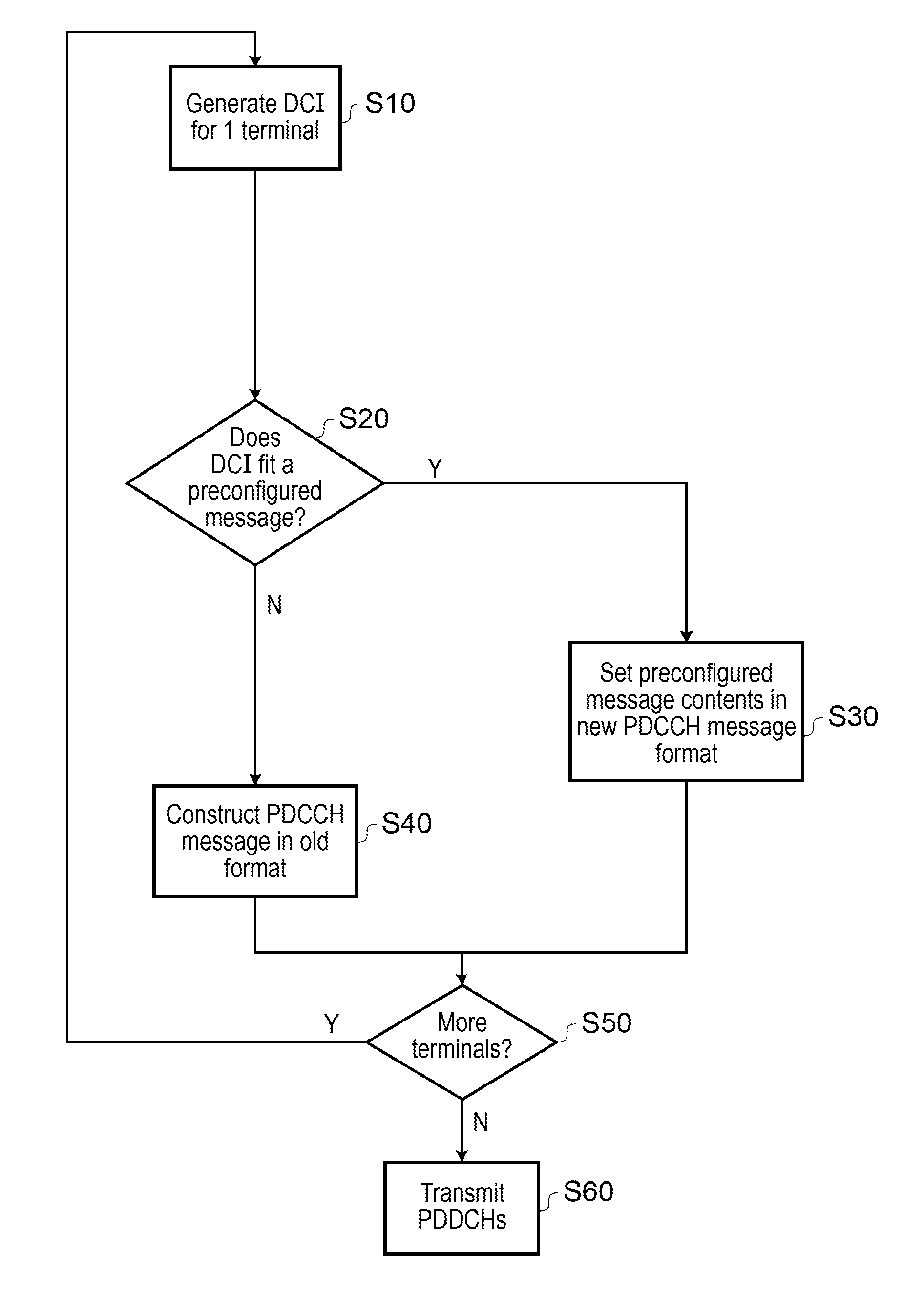Control channel for wireless communication
a control channel and wireless communication technology, applied in the field of wireless communication systems, can solve the problems of large overhead of pdcch payload, less optimal machine-to-machine, machine-to-human, or human-to-machine applications, etc., and achieve the effect of reducing the additional decoding effort and increasing the number of pdch messages
- Summary
- Abstract
- Description
- Claims
- Application Information
AI Technical Summary
Benefits of technology
Problems solved by technology
Method used
Image
Examples
first embodiment
[0163]In a first embodiment based on LTE, the network operates using FDD and comprises one or more eNBs, each controlling at least one downlink cell, each downlink cell having a corresponding uplink cell. Each DL cell may serve one or more terminals (UEs) which may receive and decode signals transmitted in that cell. In order to schedule the appropriate use of transmission resources in time, frequency and spatial domains for transmission to and from the UEs, the eNBs send control channel messages (PDCCH) to the UEs.
[0164]As already mentioned, a PDCCH message typically indicates whether the data transmission will be in the uplink (using PUSCH) or downlink (using PDSCH), it also indicates the transmission resources, and other information such as transmission mode and data rate. The UE performs blind decoding for a number of possible PDCCH message types (DCI formats) over a defined search space on the downlink primary cell (Pcell). A given UE is configured by higher layer signalling (e...
second embodiment
[0213]A second embodiment is similar to the first embodiment except that a given DCI bit is used to convey information to more than one UE simultaneously. The interpretation of the information bit may be the same or different for different UEs, for example corresponding to different RRC configurations of UL and / or DL assignments. A group of UEs is defined by configuring them with the same value of DCI-BIT-RNTI.
[0214]In a preferred version of this second embodiment, format 3B is used to convey the same command to a number of UEs. For example:—[0215]Change of state (e.g. to idle mode or “off” state)[0216]Request to transmit data (e.g. one or more sensor measurements or meter readings)[0217]Change in application level data (e.g. change in electricity tariff, in the case of an electricity meter).
[0218]In this instance, an additional / alternative (or possibly extended) search space would be more appropriate. The advantage is that a larger search space makes it possible to transmit more PD...
specific embodiment
SPS
[0220]As a specific embodiment of the present invention, we now consider potential improvement to SPS operation in LTE (i.e. LTE-Advanced) to improve operational flexibility but with low control channel overhead.
[0221]The specific embodiment is intended to be applied to SPS, so that the indicated set of parameter values for a given UE is applied to the operation of SPS for that UE. For example this can be achieved by modification of the parameters applying to a single transmission scheduled according to SPS, or modification of the parameters to be applied subsequently.
[0222]In this case, the new Format 3B already outlined above is modified as follows: If a UE is configured by higher layers to decode PDCCHs with the CRC scrambled by the SPSG C-RNTI, the UE shall decode the PDCCH according to the combination defined in table 8.9.
[0223]
TABLE 8-9PDCCH configured by SPSG C--RNTIDCI formatSearch SpaceDCI format 3BCommon
[0224]The SPSG C-RNTI is a new RNTI indicating a group of UEs confi...
PUM
 Login to View More
Login to View More Abstract
Description
Claims
Application Information
 Login to View More
Login to View More - R&D
- Intellectual Property
- Life Sciences
- Materials
- Tech Scout
- Unparalleled Data Quality
- Higher Quality Content
- 60% Fewer Hallucinations
Browse by: Latest US Patents, China's latest patents, Technical Efficacy Thesaurus, Application Domain, Technology Topic, Popular Technical Reports.
© 2025 PatSnap. All rights reserved.Legal|Privacy policy|Modern Slavery Act Transparency Statement|Sitemap|About US| Contact US: help@patsnap.com



